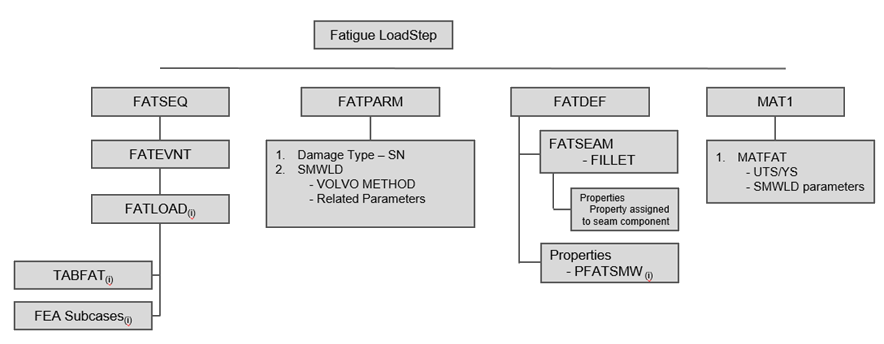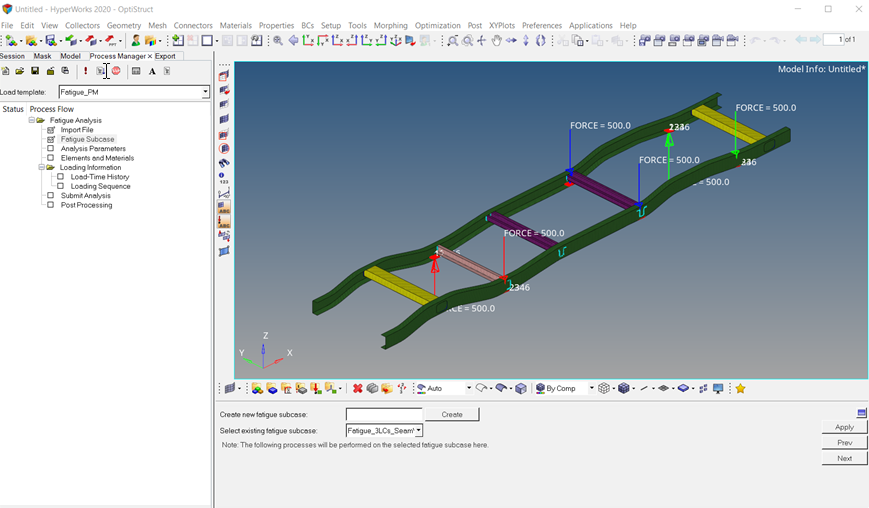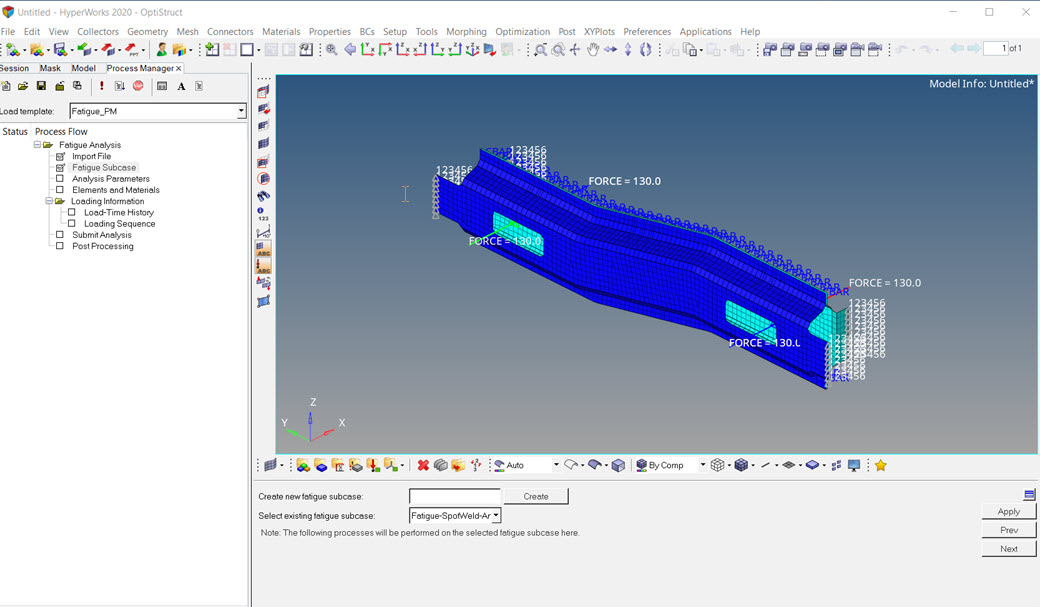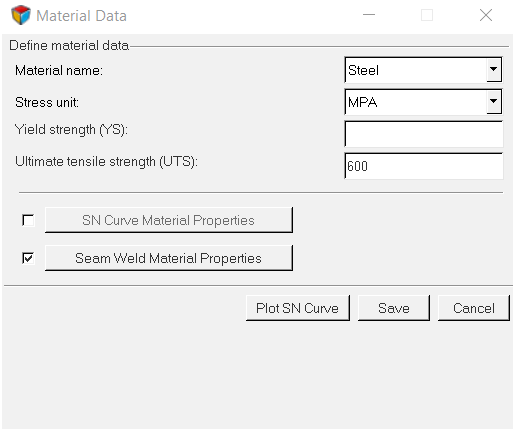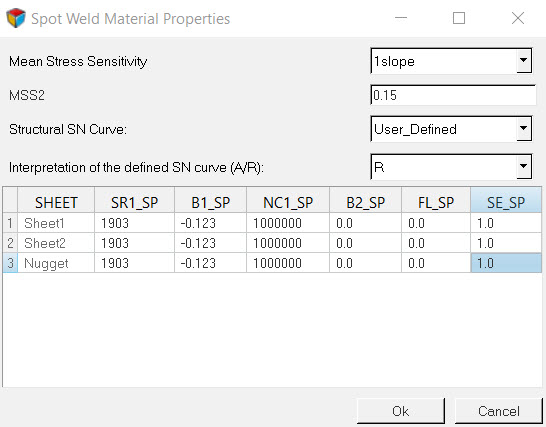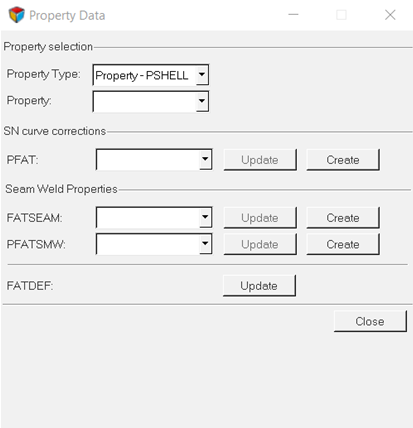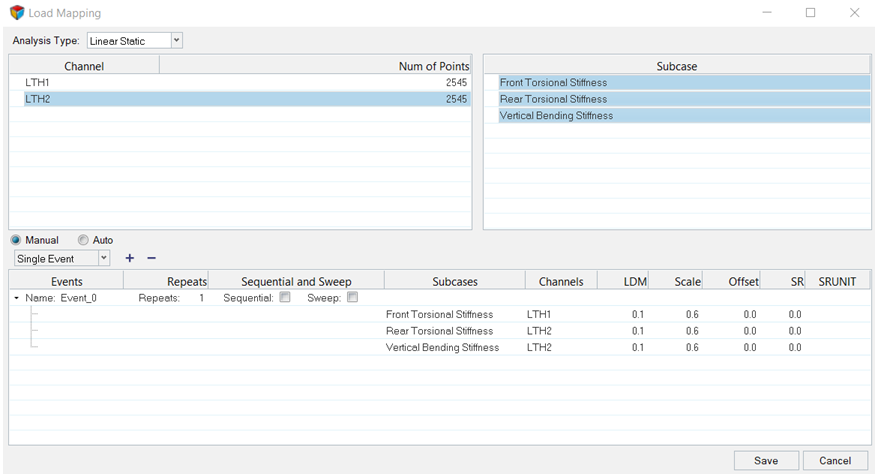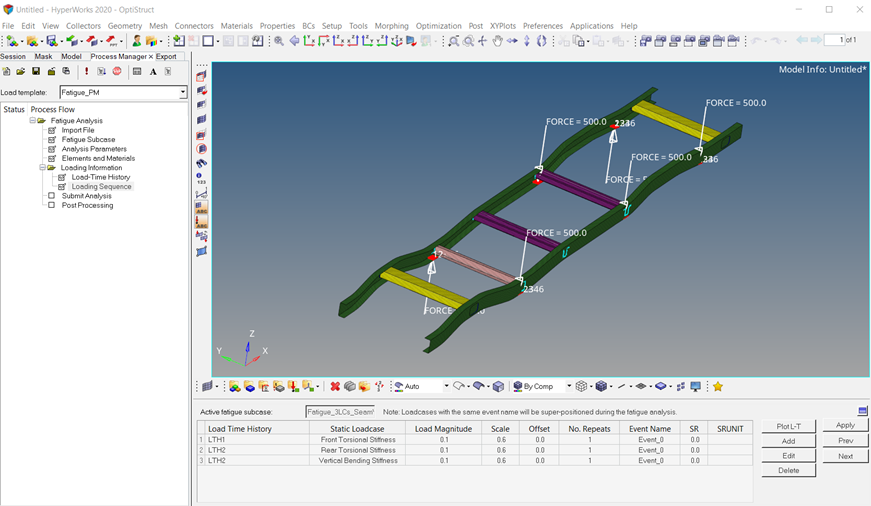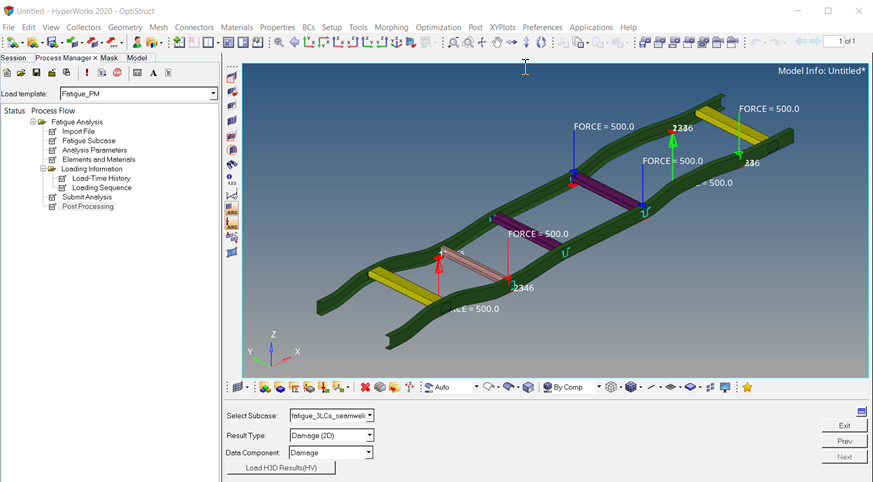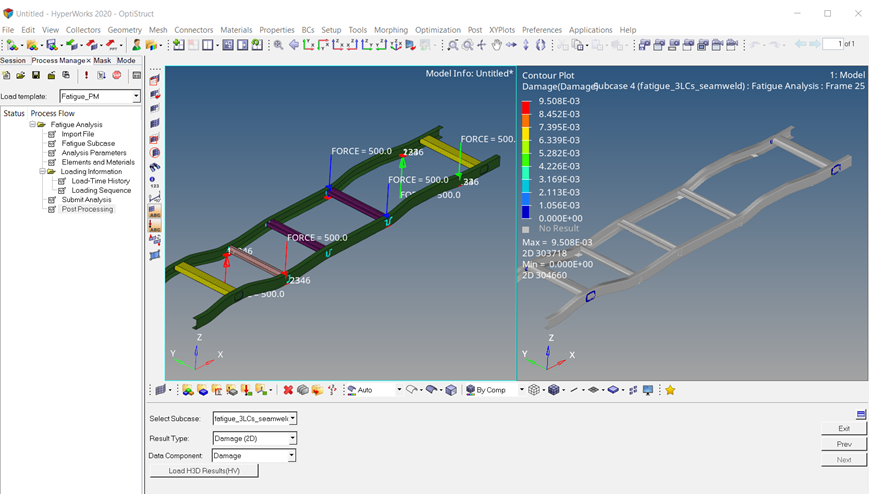Seam Weld Fatigue (FPM) using S-N Method
The method is a hot-spot stress approach applicable to thin metal sheets.
Hot-spot stress is calculated from grid point forces at the weld line. The method showed a good agreement with laboratory test results for sheet thickness between 1.0 mm and 3.0 mm. The method typically requires two SN curves. One is a bending SN curve which is dominated by bending stress, and the other is a membrane SN curve which dominated by membrane stress.
The following file found in the optistruct.zip file is needed to perform this tutorial. Refer to Access the Model Files.
SeamWeld_frame.fem
or
A copy of the model files used in this tutorial are available on <install_directory>/tutorials/hwsolvers/optistruct.
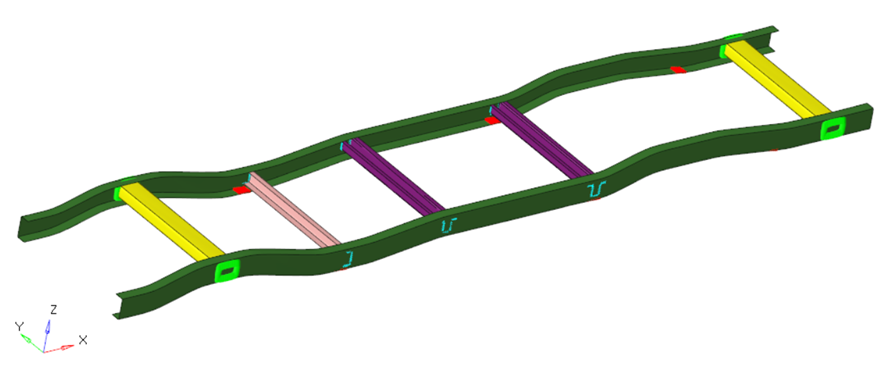
Figure 1. Automotive Frame
- Launch Fatigue Process Manager
- Import a model
- Create fatigue subcase
- Define fatigue analysis parameters
- Define fatigue elements and S-N properties
- Define load-time history and loading sequence
- Submit the job
- View results summary and launch HyperView for post-processing
Launch HyperMesh and Set the OptiStruct User Profile
The model being used for this exercise is that of an automotive frame (Figure 1). The input file consists of 3 static loadsteps to which the frame is subjected to – Frontal torsion, Rear torsion and the Vertical bending.
Import the Model
Set Up the Model
Create a Fatigue Subcase
Define Fatigue Parameters
Add Fatigue Elements and Materials
Make sure the task Elements and Materials is selected in the Fatigue Analysis tree.
Define PFATSMW Property
BRATIO helps understand if the Bending Moments or if the Membrane Forces dominates the maximum stresses based on which the interpolated SN curve is created.
Similarly, TREF and TREF_N help in accounting for thickness correction
- In the Model Browser, right-click and select .
- For Name, enter PFATSMW_7.
- For Card Image, select PFATSMW.
- Set BRATIO to 0.6.
- Set TREF to 1.1.
- Set TREF_N to 0.1.
- Click Close.
Define FATDEF Load Collector
- In the Model Browser, right-click and select .
- For Name, enter FATDEF1.
- Set the Card Image to FATDEF.
- Activate FATSEAM in the PTYPE Entity Editor.
- For FATDEF_FATSEAM_NUMIDS, enter 1.
- Select FatSeam for FATSEAMID and PFATSMW_7 for PFATSMWID.
- Click Close.
Apply Load-Time History
Load Sequences
Submit the Job
Make sure the task Submit Analysis is selected in the Fatigue Analysis tree.
 .
. 